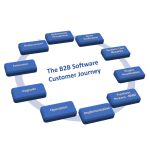Channel Building: Addressing the Partners’ Needs
 ISV’s Must Address Their Partners’ Needs – Not Just Their Customers’
ISV’s Must Address Their Partners’ Needs – Not Just Their Customers’
ISVs are typically very good at solving end-user customers’ business challenges, but often neglect to address those of their own channel partners which can lead to a lack of partners’ focus and commitment.
Recently, an ISV with an e-business solution running as an add-on to Microsoft Dynamics AX, came to me with two issues they were experiencing with their channel partners:
1. Partners do not lead / are not proactive with the ISV solution – it is an afterthought behind AX
2. Partners are not specifically committing to a plan of activities with this ISV
After several partner interviews, we recognized that partners are not seeing this ISV as strategic to their business and decided on a two pronged approach:
1. Business Case
We made some simple assumptions and crunched the numbers on a partner allocating 25% of both a sales and presales rep to this ISV and after estimating the incremental revenue this ISV can drive, we saw a 12 months return of $3M+ in partner margin which equated to 50:1 ROI!
We then looked at customers’ ROI. The Microsoft Dynamics AX ROI tool indicated that a customer’s investment in AX will take about three years to pay back – typical for a mid-market ERP. But then we again made some simple assumptions about the incremental revenue growth and operational efficiency saving a typical customer could get with this ISV and our model gave us a 3-year ROI of 13.5:1 and a solution payback time of 2.6 months! And this is for the entire solution: ISV + AX. This made the partners realize that the likely hood of winning a customer with a solution that repays itself in 2.6 months rather than 3 years is much higher.
2. Competitive Advantage
We then decided to address the mind share issue by segmenting the verticals where each partner has demonstrated expertise and offering to them to develop (actually only customize) a solution for that vertical which they would have performance based conditional exclusivity for a period of time and they could co-brand it as their own product. To do so, they would have to find a beta customer who would pay for the initial development costs. Partners recognized that with this approach, they could differentiate from other resellers in the market and they wouldn’t have to invest time and money in having to develop their own application.
With this approach we are now giving solid reasons for partners to lead with this solution because it addresses both the customers’ and the partners’ business challenges.
Paul Solski
TBKconsult, Seattle
pso@tbkconsult.com








